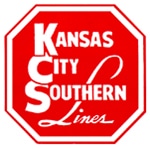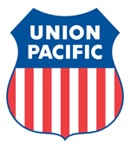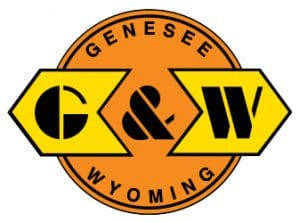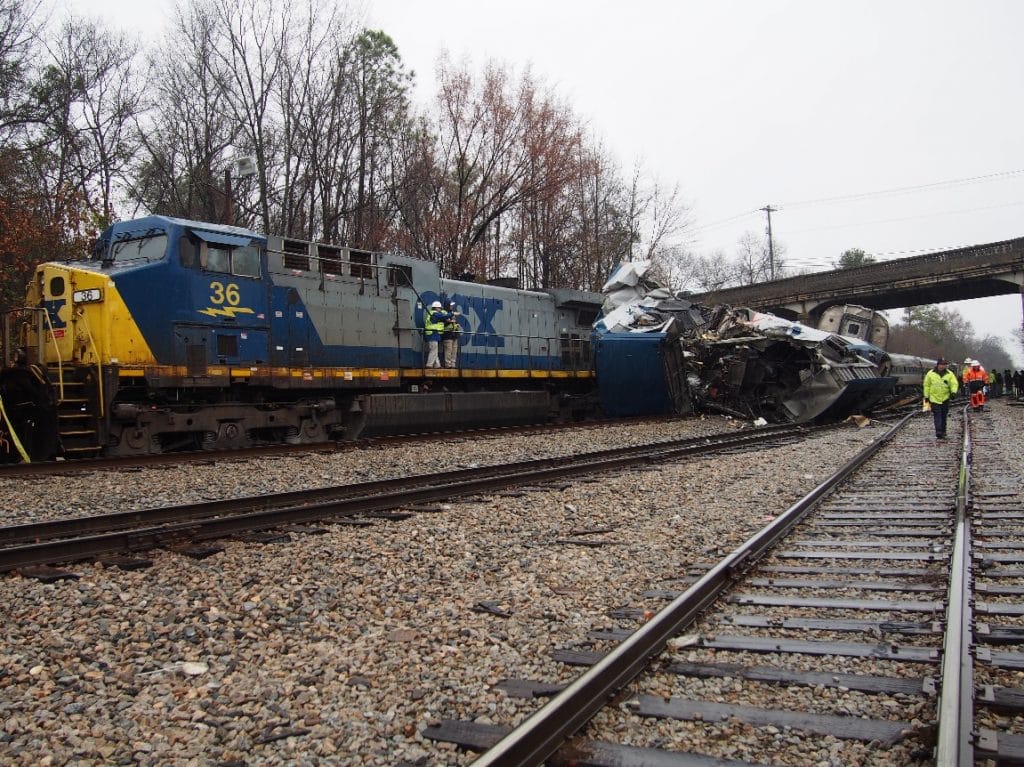The National Transportation Safety Board (NTSB) ruled last month on the probable cause of a fatal accident in June 2017 that killed both a CSX conductor and a conductor trainee.
The men were struck from behind at 11:18 p.m. June 27, 2017, by an Amtrak train while walking to the cab of their train in Ivy City, a neighborhood in Washington, D.C.
The men had just completed a railcar inspection.
The NTSB report, released April 9, stated that there had been no rail traffic for about an hour on the active tracks upon which the men were walking as they returned.
As they walked, a pair of Amtrak trains, one northbound and one southbound, approached the men, the report stated.
NTSB said the northbound Amtrak train approached the men from the front on tracks to the left of those upon which they were walking, and that both trains sounded their horns and bells at virtually the same time in attempts to alert them.
“Given the simultaneous and similar horn and bell sounds from the two trains, the conductors may not have discerned two sources of the sounds and, consequently, concluded that the sounds originated from only one train — the one that they had detected ahead of them.
“As a result, it appears the conductors were unaware that a second train was approaching them from behind,” the report stated.
NTSB issued a new safety recommendation to the two carriers involved in the accident at the conclusion of its report:
“Prohibit employees from fouling adjacent tracks of another railroad unless the employees are provided protection from trains and/or equipment on the adjacent tracks by means of communication between the two railroads.”
Read the full NTSB report here.
Tag: CSX
A ruling is expected in January on whether a lawsuit by a trio of CSX shareholders who have sued the carrier’s board over the hiring of late CEO E. Hunter Harrison in 2017 can advance, the Florida Times-Union reports.
The 72-year-old Harrison sought an $84 million financial package when brought aboard from Canadian Pacific to lead the Jacksonville, Fla.,-based carrier in March 2017. Harrison began implementing his Precision Scheduled Railroad (PSR) strategy at CSX, resulting in reports of service disruption that led to a hearing before the federal Surface Transportation Board (STB).
Harrison died at age 73 in December, nine months after his hiring and just two days after the carrier had placed him on medical leave.
“CSX board failed to properly vet Harrison’s medical condition before agreeing to his demands involving compensation, reimbursement arrangements to be made with Mantle Ridge, and the addition of conflicted Board members,” the lawsuit claims. “Knowing that Harrison’s demands were extraordinary and outrageous, couple with their overriding fears concerning Harrison’s poor health, the Board resolved to see guidance from its shareholders and called a special meeting to do so.”
However, the lawsuit claims, after being influenced by CSX minority shareholder Mantle Ridge, the carrier’s board went ahead with the hiring and took the decision out of shareholders’ hands.
“Instead of taking proper steps to protect CSX and offload some of the financial risk of Harrison’s hiring, the board instead approved and disseminated false and misleading proxy statements to shareholders, and in doing so ensured that the outcome of the shareholder vote regarding the reimbursement arrangement was predetermined to favor Harrison and Mantle Ridge…” the lawsuit states.
More than 90 percent of CSX shareholders voted to support the reimbursements at the annual shareholder meeting in June.
“CSX’s Board knew about, hid and outright deceived shareholders about Harrison’s ill health and physical infirmities,” the lawsuit states.
The shareholders’ suit was originally filed in April 2018, dropped and then re-filed in mid-July. If Judge Kevin Blazs of Florida’s Fourth Judicial Circuit Court rules in favor of the shareholders, their lawsuit could move ahead to a jury trial, the Times-Union reported.
The lawsuit’s case number is 2018-CA-004625.
According to the Jacksonville Business Journal, two more lawsuits were filed Nov. 29 alleging that CSX Corp. has violated employees’ rights protected under the Family and Medical Leave Act (FMLA).
According to the Department of Labor, “FMLA provides eligible employees up to 12 workweeks of unpaid leave a year…and entitles employees to return to their same or equivalent job at the end of their leave.”
One suit was filed by a former employee from West Virginia who alleges that she was fired for absenteeism while using approved FMLA time off to address migraines and recover from knee surgery, the Journal reported.
The Journal said the other suit was filed in Ohio by an employee who states he’s been denied bonuses for good attendance because he took covered leave. This suit has been filed as a class-action suit, according to the Journal.
CSX has been accused by multiple others of having violated FMLA this year. In February, a suit was filed in West Virginia claiming that CSX fired 46 employees who were covered under FMLA. In March, a similar claim was made in Maryland after the railroad fired 20 more employees for the same reasons. Three more suits filed this year in Alabama and Pennsylvania also allege the company violated rights covered under FMLA.
Late last year, CSX investigated a number of employees for taking FMLA leave, leading to one of SMART TD’s Designated Legal Counsel to offer services.
Net Earnings: Increased 34 percent to $1.4 billion
Revenue: Increased 16 percent to $6.1 billion
Operating Income: Increased 9 percent to $2.1 billion
Operating Expenses: Increased 20 percent to $4.0 billion
Operating Ratio: Increased 2.1 points to 64.5 percent
Click here to read BNSF’s full earnings report.
Net Earnings: Increased 18 percent to C$1,134 million
Earnings Per Share: Diluted earnings per share increased 21 percent to C$1.54
Revenue: Increased 14 percent to a record C$3,688 million
Operating Income: Increased 8 percent to C$1,492 million
Operating Expenses: Increased 19 percent to C$2,196
Operating Ratio: Increased 2.3 points to 59.5 percent
Click here to read CN’s full earnings report.
Net Earnings: Increased 22 percent to C$622 million
Earnings Per Share: Diluted earnings per share increased 24 percent to a record C$4.35
Revenue: Increased 19 percent to a record C$1.9 billion
Operating Income: Increased 27 percent to C$790 million
Operating Expenses: Increased 14 percent to C$1,108 million
Operating Ratio: Decreased 270 points to a record low of 58.3 percent
Click here to read CP’s full earnings report.
Net Earnings: Increased 106 percent to $894 million
Earnings Per Share: Increased to $1.05 per share from $0.51 per share
Revenue: Increased 14 percent to $3.13 billion
Operating Income: Increased 49 percent to $1.29 billion
Operating Expenses: Declined 2 percent to $1,84 billion
Operating Ratio: Improved 970 basis points to a record 58.7 percent
Click here to read CSX’s full earnings report.
Net Earnings: Increased to $174 million from $129 million
Earnings Per Share: Diluted earnings per share increased 38 percent to $1.70
Revenue: Increased 6 percent to a record $699 million
Operating Income: Increased 14 percent to $265 million
Operating Expenses: Increased to $433.6 million from $422.8 million
Operating Ratio: Improved 2.4 basis points to 62 percent
Click here to read KCS’s full earnings report.
Net Earnings: Increased 39 percent to $702 million
Earnings Per Share: Diluted earnings per share increased 44 percent to a third quarter record of $2.52
Revenue: Increased 10 percent to $2.9 billion
Operating Income: Increased 14 percent to a third quarter record of $1.0 billion
Operating Expenses: Increased 9 percent to $1.9 billion
Operating Ratio: Declined 1.1 basis points to a record 65.4 percent
Click here to read NS’s full earnings report.
Net Earnings: Increased from $1.2 billion to $1.6 billion
Earnings Per Share: Increased 43 percent from $1.50 to a record $2.15 per diluted share
Revenue: Increased 10 percent to $5.9 billion
Operating Income: Increased 9 percent to $2.3 billion
Operating Expenses: Increased 10 percent from $3.3 billion to $3.7 billion
Operating Ratio: Stayed flat at 61.7 percent
Click here to read UP’s full earnings report.
Financial results of the largest shortline:
Net Earnings: Increased to $69.6 million from $50.2 million
Earnings Per Share: Increased 45 percent to $1.16
Revenue: Increased 11.5 percent to $355.7 million from $318.9 million
Operating Income: Increased 24.7 percent to $102.5 million, up from $82.2 million
Operating Expenses: Increased to $253,225 from $236,724
Operating Ratio: Improved 3 points to 71.2 percent from 74.2 percent
Click here to read G&W’s full earnings report.
Notes:
- Operating ratio is a railroad’s operating expenses expressed as a percentage of operating revenue, and is considered by economists to be the basic measure of carrier profitability. The lower the operating ratio, the more efficient the railroad.
- All comparisons are made to 2017’s third quarter financial results for each railroad.
- Figures for G&W are for North American operations only with the exception of Net Earnings & Earnings Per Share, which includes all G&W operations, as solely North American figures were unavailable in these categories.
Net Earnings: Increased 27 percent to C$1,310 million; diluted earnings per share increased 30 percent to C$1.77
Revenue: Increased 9 percent to C$3,631 million
Operating Income: Increased 7 percent to C$1,519 million
Operating Ratio: Increased 0.7 points to 58.2 percent (worsened as compared to the same period in 2017, but an improvement from the first quarter 2018)
Click here to read CN’s full earnings report.
Net Earnings: Decreased 9 percent to C$436 million from C$480 million; Diluted earnings per share declined 7 percent to C$3.04, down from C$3.27
Revenue: Increased 7 percent to C$1.75 billion from C$1.64 billion
Operating Income: Increased 3 percent to C$627 million
Operating Ratio: Increased 140 basis points to 64.2 as compared to last year’s 62.8 percent
Click here to read CP’s full earnings report.
Net Earnings: $877 million or $1.01 per share, up from $510 million or $0.55 per share
Revenue: Increased 6 percent to $3.10 billion
Operating Income: Increased 34 percent to $1.28 billion from $957 million
Operating Ratio: An all time company quarterly record of 58.6 percent as compared to last year’s 67.4 percent
Click here to read CSX’s full earnings report.
Net Earnings: Increased to $149 million or $1.45 per diluted share, as compared to last year’s $135 million or $1.27 per diluted share. Adjusted diluted earnings per share increased 16 percent to a record $1.54
Revenue: Increased 4 percent to a record $682 million
Operating Income: Increased 3 percent to a record $246 million
Operating Ratio: Increased 0.5 points to 64 percent as compared to 63.5 percent a year ago
Click here to read KCS’s full earnings report.
Net Earnings: Increased 43 percent to $710 million; Diluted earnings per share increased 46 percent to $2.50 per share
Revenue: Increased 10 percent to $2.9 billion
Operating Income: Increased 18 percent to a record $1.0 billion
Operating Ratio: A record 64.6 percent
Click here to read NS’s full earnings report.
Net Earnings: Increased to $1.5 billion from $1.2 billion, or a record $1.98 diluted earnings per share an increase of 37% from $1.45 per share
Revenue: Increased 5 percent to $2.1 billion
Operating Income: Increased 8 percent to $5.7 billion
Operating Ratio: Increased 1.1 points to 63.0 percent
Click here to read UP’s full earnings report.
Financial results of the largest U.S. shortline:
Net Earnings: Decreased to $44.2 million or $0.73 diluted earnings per share from $46 million or $0.74 per share
Revenue: Increased 7.6 percent to $339.6 million from $315.7 million
Operating Income: Increased 0.7 percent to $80.3 million from $79.7 million
Operating Ratio: Increased 1.6 points to 76.4 percent
Click here to read G&W’s full earnings report.
Notes:
- Operating ratio is a railroad’s operating expenses expressed as a percentage of operating revenue, and is considered by economists to be the basic measure of carrier profitability. The lower the operating ratio, the more efficient the railroad.
- All comparisons are made to 2017’s second quarter financial results for each railroad.
Net Earnings: Up 37 percent, to $1.1 billion
Revenue: $5.6 billion, an increase of 8 percent
Operating Income: $1.74 billion, up from $1.58 billion a year ago
Operating Ratio: Increased to 68.5 percent, but down from 69.2 percent a year ago
Click here to read BNSF’s full earnings report. (PDF)
Net Earnings: Increased 16 percent to C$741 million from C$884 million; diluted earnings per share decreased by 14 percent to C$1.00 from C$1.16
Revenue: Decreased C$12 million to C$3,194 million from C$3,206 million
Operating Income: Decreased 16 percent to C$1,030 million from C$1,224 million
Operating Ratio: Increased 6.0 points to 67.8 percent from 61.8 percent
Click here to read CN’s full earnings report.
Net Earnings: Decreased 19 percent from C$431 million to C$348 million; diluted earnings per share decreased 18 percent to C$2.41 from C$2.93
Revenue: Increased 4 percent to C$1.66 billion from C$1.60 billion
Operating Income: Decreased 11 percent to C$540 million from C$604 million
Operating Ratio: Increased 510 basis points to 67.5 percent
Click here to read CP’s full earnings report.
Net Earnings: A record $695 million or $0.78 per share as compared to 2017’s $362 million or $0.39 per share
Revenue: Remained flat at $2.88 billion
Operating Income: Increased 36 percent to $1.04 billion from $769 million from the same quarter in 2017
Operating Ratio: Improved 950 basis points to 63.7 percent from 73.2 percent in 2017
Click here to read CSX’s full earnings report.
Net Earnings: Decreased to $145 million or $1.40 diluted earnings per share from $147 million or $1.38 per share
Revenue: Increased 5 percent to a record $639 million, up from $610 million
Operating Income: Increased 4 percent to a record $219 million from $211 million
Operating Ratio: Increased to 65.8 percent from 65.4 percent
Click here to read KCS’ full earnings report.
Net Earnings: Increased 27 percent to a record $552 million from $757 million; diluted earnings per share increased 30 percent to a record $1.93 from $1.48
Revenue: Increased 6 percent to $2.7 billion from $2.6 billion
Operating Income: Increased 10 percent to a record $835 million from $757 million
Operating Ratio: A record 69.3 percent down from 70.6 percent
Click here to read NS’ full earnings report.
Net Earnings: Increased to $1.3 billion from $1.1 billion; diluted earnings per share increased 27 percent to a record $1.68 from $1.32 per share.
Revenue: Increased 7 percent to $5.5 billion, up from $5.1 billion
Operating Income: Increased 8 percent to $1.9 billion from $1.8 billion
Operating Ratio: Improved 0.6 points to 64.6 percent from 65.2
Click here to read UP’s full earnings report.
Notes:
- Operating ratio is a railroad’s operating expenses expressed as a percentage of operating revenue, and is considered by economists to be the basic measure of carrier profitability. The lower the operating ratio, the more efficient the railroad.
- All comparisons are made to 2017’s first quarter financial results for each railroad.
The Trump administration’s Federal Railroad Administration (FRA) has declined a request made by SMART Transportation Division to address the safety concerns of excessively long trains.
In an April 25, 2017, letter from National Legislative Director John Risch to Robert Lauby, FRA’s associate administrator for safety, Risch referenced a pair of trains – one CSX train consisting of 234 cars and exceeding 2 ½ miles in length and a BNSF train that had 246 cars that also exceeded 2 ½ miles.
Risch said in the letter that such “incredibly long” trains pose challenges to crew radio communications and maintaining brake pipe pressure, block more rail crossings and that crews are not adequately trained to handle these dangerously long trains.
But those concerns were simply brushed aside by Lauby.
“FRA does not have sufficient data or evidence to justify an Emergency Order limiting the length of trains,” he wrote in his March 7, 2018, response, saying also that the carriers were lengthening trains in an attempt “to enhance service delivery and operational efficiencies.”
Here is the link to Risch’s original letter and the pro-industry response received nearly a year later.
“The letter signed by Lauby looked like it was written by some railroad lobbyist,” Risch said. “Anyone who has ever dealt with a 2-mile-plus-long train knows they are anything but efficient. They tie up the railroad because sidings and rail yards can’t handle them.”
Risch testified last October in a Surface Transportation Board listening session centered on CSX’s service problems about the numerous dangers posed by longer trains.
This testimony plus derailments and other safety concerns, such as blocked crossings, did cause members of the House Transportation Committee to take notice.
A letter from U.S. Reps. Peter DeFazio and Michael Capuano, Democratic members of the committee, spurred the Government Accountability Office (GAO) to begin an investigation last month into the effects of excessively long trains and the safety hazards that they pose.
That investigation is ongoing.
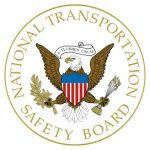
The engineer and conductor of the Amtrak train died as a result of the collision and at least 92 passengers and crewmembers on the Amtrak train were transported to medical facilities. The engineer of the stopped CSX train had exited the lead locomotive before the Amtrak train entered the siding, ran to safety, and was not injured. The conductor of the CSX lead locomotive saw the Amtrak train approaching in the siding and ran to the back of locomotive. The conductor was thrown off the locomotive and sustained minor injuries.
The normal method of train operation on the subdivision was a traffic control system with wayside signals. Signal indications authorize movement in either direction. On the day before the accident, CSX signal personnel suspended the traffic control signal system to install updated traffic control system components for implementing positive train control (PTC) on the subdivision. During the suspension, scheduled to last through February 4, 2018, dispatchers would use track warrants to move trains through absolute blocks in the work territory.
National Transportation Safety Board (NTSB) investigators inspected the track structure, signal system and mechanical equipment; collected and are examining records for operations, signal systems, mechanical equipment, and track and engineering; and interviewed train crewmembers, train dispatchers and other personnel from CSX and Amtrak. In addition, investigators are reviewing the emergency response to the accident. Members of the NTSB investigative team traveled to Jacksonville, Fla., to investigate the dispatching aspects of the accident, to test the CSX signal system and to conduct additional interviews.
While on-scene, NTSB investigators located and removed the undamaged event data recorder from the destroyed Amtrak locomotive. The event data recorder was successfully downloaded and an initial review of the data revealed the following information:
- From the train’s last stop, the maximum speed reached 57 mph, which was below the 59 mph limit allowed under signal suspension rules.
- About 7 seconds before the end of the recording, the train was moving at 56 mph and the train’s horn was activated for 3 seconds.
- The brake pipe pressure began decreasing 2 seconds later.
- The following second, the throttle transitioned from full throttle to idle, while the train was moving at 54 mph.
- The engineer induced emergency braking one second later, while the train was moving at a speed of 53 mph.
- The recording ended 2 seconds later, as the train’s air braking system was approaching maximum braking effort and the train’s speed was 50 mph.
The Amtrak locomotive’s forward-facing video recorder hard drive was recovered and downloaded. The initial review of the recording indicated that it ended prior to the collision. NTSB engineers are attempting additional forensic efforts to determine if additional information can be recovered. Other investigative efforts included the download of information from the forward-facing video recorder and the extraction of the event recorder from the CSX lead locomotive.
Parties to the investigation include the Federal Railroad Administration, CSX, Amtrak, Brotherhood of Locomotive Engineers and Trainmen; International Sheet Metal, Air, Rail, and Transportation Workers-Transportation Division; Brotherhood of Railroad Signalmen, and the State of South Carolina Office of Regulatory Staff.
In response to this accident, the NTSB issued an urgent recommendation requesting that the Federal Railroad Administration issue an emergency order providing instructions for railroads to follow when signal suspensions are in effect and a switch has been reported relined for a main track.
***
These are the preliminary findings of the NTSB and will be either supplemented or corrected during the course of the investigation.

The Federal Railroad Administration (FRA) received one urgent safety recommendation based on NTSB findings in the agency’s investigation of the Feb. 4, 2018, collision of an Amtrak train and a CSX train near Cayce, S.C. The conductor and engineer of the Amtrak train died as a result of the collision. The NTSB issued two urgent safety recommendations to the Metropolitan Transportation Authority (MTA) based on findings from its investigation of the June 10, 2017, Long Island Rail Road (LIRR) accident in which a roadway worker died near Queens Village, N.Y.
In the investigation of the train collision in Cayce, South Carolina, investigators found that on the day before the accident, CSX personnel suspended the traffic control signal system to install updated traffic control system components for the implementation of positive train control (PTC). The lack of signals required dispatchers to use track warrants to move trains through the work territory.
In this accident, and in a similar March 14, 2016, accident in Granger, Wyo., safe movement of the trains, through the signal suspension, depended upon proper switch alignment. That switch alignment relied on error-free manual work, which was not safeguarded by either technology or supervision, creating a single point of failure.
The NTSB concludes additional measures are needed to ensure safe operations during signal suspension and so issued an urgent safety recommendation to the FRA seeking an emergency order directing restricted speed for trains or locomotives passing through signal suspensions when a switch has been reported relined for a main track.
“The installation of the life-saving positive train control technology on the CSX tracks is not the cause of the Cayce, S.C. train collision,” said NTSB Chairman Robert Sumwalt.
“While the collision remains under investigation, we know that signal suspensions are an unusual operating condition, used for signal maintenance, repair and installation, that have the potential to increase the risk of train collisions. That risk was not mitigated in the Cayce collision. Our recommendation, if implemented, works to mitigate that increased risk.” said Sumwalt.
During the investigation of the LIRR accident, the NTSB identified an improper practice by LIRR roadway workers who were working on or near the tracks. LIRR employees were using “train approach warning” as their method of on-track safety, but they did not clear the track, as required, when trains approached and their “predetermined place of safety” did not comply with LIRR rules and procedures.
The NTSB is concerned LIRR management is overlooking and therefore normalizing noncompliance with safety rules and regulations for proper clearing of tracks while using “train approach warning” for worker protection. The two urgent safety recommendations to the MTA call for MTA to audit LIRR’s use of “train approach warning” for worker protection, and, to implement corrective action for deficiencies found through the audit.
The full safety recommendation reports for these urgent safety recommendations are available online at https://goo.gl/z87Dpz and https://goo.gl/LVVef3.
Robert Sumwalt, chairman of the National Transportation Safety Board (NTSB), reported some preliminary findings Monday afternoon of his agency’s investigation into the Amtrak-CSX train collision that occurred Feb. 4 near Cayce, S.C.
The train had 139 passengers and eight crewmembers on board. The engineer and conductor in the cab of the locomotive were killed and six passengers remain hospitalized, two in critical condition. SMART TD conductor Michael Cella of Local 30 in Florida was one of two Amtrak crewmembers killed in the accident.
Based upon the event data recorders located within the Amtrak locomotive, Sumwalt said, Amtrak Train 91 was not speeding at the time of the collision.
He said Amtrak’s data recorder had the following information:
- The train horn was sounded for three seconds at the seven second mark before the collision.
- The train was traveling at a maximum speed of 57 mph in a 59-mph zone.
- The engineer moved the throttle to idle and had applied the emergency brakes before the collision.
- At the time of the collision, the train had reduced its speed to 50 mph.
Sumwalt stated that the reason for the 59-mph speed limit in the area was attributable to track signals being inoperable due to CSX performing upgrades to their track signal system to switch over to positive train control (PTC). He said a track warrant system was in place, and Amtrak had been given clearance to operate in the area.
As previously reported by Sumwalt, a switch had been thrown to allow a CSX train to back into a side track. The switch had never been released back to its original position, and the Amtrak train entered the track where the CSX freight train was parked instead of continuing on the main track.
Sumwalt said that the CSX dispatcher had been notified that the siding operation had been completed and so gave Amtrak clearance to proceed through.
Typically, when the dispatcher is given notification that such a proceeding has been completed, it means that the switch has been moved back into position. The NTSB is investigating as to why the switch had been locked into position for the siding.
Sumwalt reported that interviews with CSX’s engineer, conductor, trainmaster and dispatcher had been conducted Monday along with some of Amtrak’s crew.
Additional interviews are planned for Tuesday. No information about the content of the interviews was released.
The information provided in Monday’s press conference is considered preliminary, and no conclusions should or can be drawn until the NTSB’s investigation is complete and official causes are released by the agency.




